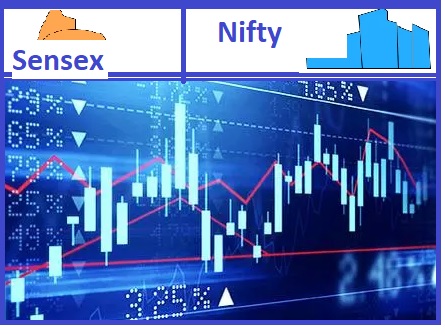
(Photo : BTIN)
sensex
- Indian stock markets hit record highs, driven by the US Federal Reserve's recent rate cut.
- G Chokkalingam of Equinomics Research attributes this to foreign investors aggressively buying Indian equities.
- All 13 major sectors logged gains, with pharma and state-owned companies leading with over 1% rise each.
- The bullish trend in Indian shares mirrors other Asian markets, highlighting the interconnectedness of global financial markets.
Indian stock markets soared to unprecedented heights on Monday, buoyed by the anticipation of increased foreign inflows. This surge in investor sentiment was primarily triggered by the US Federal Reserve's recent rate cut, which has sparked a risk-on sentiment among investors worldwide.
The Nifty 50 index and the S&P BSE Sensex, two of India's leading stock market indices, both experienced a rise of approximately 0.4% each, reaching record highs as of 9:48 a.m. IST. This upward trend is not a one-off event; the benchmark indices have been consistently scaling all-time peaks every day since the Fed's rate cut on September 18.
Impact of US Fed Rate Cut on Indian Equities
G Chokkalingam, the founder and head of research at Equinomics Research, provided insight into this phenomenon. He stated, "Post the rate cut by the Fed, foreign portfolio investors have turned aggressive buyers of Indian equities, which is a positive. This shift in investment behavior is a testament to the global impact of the Fed's decision and its ripple effect on emerging markets like India." Chokkalingam further added, "There is further headroom for the benchmarks Nifty and Sensex. Besides Fed, steady monsoons and strong macroeconomic growth should continue to propel market further." His statement underscores the potential for continued growth in the Indian stock market, fueled not just by international factors but also by domestic conditions such as favorable weather and robust economic growth.
Sectoral Gains and Individual Stock Performances
The positive trend was not confined to the benchmark indices alone. All 13 major sectors logged gains, with the pharma and state-owned companies sectors leading the pack with a rise of over 1% each. This broad-based growth indicates a healthy and robust market, with diverse sectors contributing to the overall upward trend. The broader, more domestically focused small and mid-caps also experienced growth, rising 0.5% and 0.2%, respectively.
This growth in smaller companies is a positive sign, indicating that the benefits of the bullish market are not just confined to the larger players but are also trickling down to smaller firms.
Among individual stocks, city gas distributor Adani Total stood out, with its stock price rising 5% after securing financing worth $375 million. The company plans to use this funding to expand its city gas distribution network, a move that is likely to boost its future earnings and hence, its stock price. Another notable performer was drug maker Glenmark Pharma, whose stock jumped 7%.
This surge was triggered by the U.S. drug regulator issuing form 483 with zero observations after an inspection at the company's formulations manufacturing facility in Aurangabad in the Indian state of Maharashtra. This positive development is a testament to Glenmark's adherence to quality standards and augurs well for its future prospects.
Asian Market Trends and Historical Similarities
The bullish trend in Indian shares was mirrored in other Asian markets as well, with the MSCI Asia ex-Japan index trading 0.3% higher. This rise was aided by China trimming its repo rate to support its economy, a move that is likely to boost liquidity and hence, investment in the region. This surge in Indian shares is reminiscent of similar trends observed in the past.
For instance, in 2017, Indian shares hit record highs following the US Federal Reserve's decision to maintain its benchmark interest rate. This decision sparked a surge in foreign inflows into emerging markets like India, propelling their stock markets to new heights.









